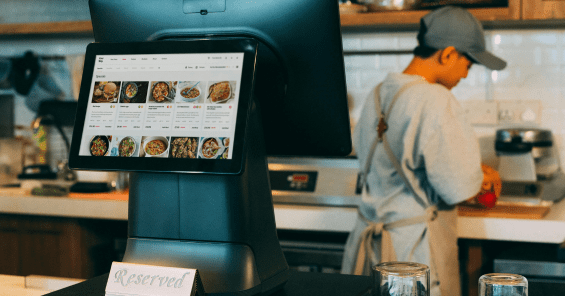

A Guide to Lean Inventory Management for Restaurants
Does your restaurant practice lean inventory management? Read how to keep just enough stocktake on hand to meet customer demand.
A 2015 Natural Resources Defense Council (NRDC) report estimated that between 22 and 33 billion pounds of food are wasted by restaurants every year. And about 7 percent of food in restaurants is wasted before it even reaches the customer.
But the waste doesn't stop there. Think about the overhead spent to store stocktake and the money spent on vendors and staff to deliver and prepare it. All of that effort, only to see it end up in the trash somewhere along the supply chain because of spoilage, misfires, spills, or even theft.
To reduce waste and increase BOH efficiency, many restaurant owners have turned to lean inventory management, as well as lean practices in their kitchens to manage inventory cost. The five principles of lean management and a lean approach to inventory management practices can help them save money and provide a better dining experience for their customers.
Six Foolproof Restaurant Cost Management Techniques
Maximize your restaurant's profitability with this essential eBook. 📈 Learn foolproof cost management techniques and unlock proven strategies for supplier negotiations and brand loyalty. 👩🍳🤝

What Is Lean Inventory Management?
Lean inventory management is a variation of lean in inventory management practices adopted by the manufacturing industry. It was developed to reduce inventory waste and supply chain costs by striking a balance between having too much or not enough stocktake.
With lean inventory management comes lean practices for your staff. Lean practices hinge on these five principles:
- Value: What value will your restaurant gain from lean inventory management? All actions your staff takes should work toward that value.
- Flow: How will lean inventory affect your staff's work flow? A workflow that supports lean practices should be put in place.
- Pull: Inventory is only pulled when an order comes in. (More on this in a minute.)
- Responsiveness: Your staff and your business should adapt to changes as they arise, and adjust practices to meet those changes.
- Perfection: Everything should be done right the first time. That means putting standardized practices in place and periodically refining those practices to achieve perfection.
Basically, when a restaurant practices lean inventory management, they keep just enough stocktake on hand to meet customer demand. They eliminate waste by doing away with the practice of having bulk items in their inventory to cover every possible ordering scenario.
By keeping only what they need during a given shift, day, or week, the restaurant staff reduces the possibility of spoiled or expired ingredients that have to be thrown away.
In doing so, they create more efficient processes in both the front and back of house to support lean management.
How to Implement a Lean Inventory Management System
Keeping a lean inventory is a bit of a balancing act, however. Restaurants have to be on top of their inventory management, ensuring orders are placed exactly when they need to be for a smooth inventory flow. They have to keep an eye on food and vendor prices, as well, to make sure they're not overspending.
To do that, there are some lean tools restaurants should put in place.
Push vs. Pull System
In a push system, the BOH makes a large amount of a menu item ahead of demand, based on past average orders. While that may save time, particularly with soups, salads, or stews, it can lead to waste if a restaurant doesn't get as many orders as usual.
With the pull system, kitchens make menu items as orders come in. Dishes are fresher and ingredients aren't wasted in unused portions.
To implement a pull system, kitchen managers may have to take a hard look at their staff, their food production process, and even the location of their stations to make sure they align with the new process. For example, there may no longer be a need for a warming station for bulk items like french fries, but there may be a need for more fry cooks to make fries as they're ordered.
PAR Level and JIT Inventory
With the pull system, restaurants need only keep a PAR level inventory. PAR, which stands for periodic automatic replacement, is calculated using the average past inventory levels and ingredient usage. This is also called safety or buffer stock.
When inventory levels dip below PAR level, it's time to reorder. This is also referred to as JIT inventory, when stocktake is ordered just in time to meet demand. JIT inventory works well for perishable supply items, such as fruits, vegetables, and dairy, by reducing excess inventory that could spoil.
The FIFO System
If you're thinking about switching to a lean inventory management practice, it's important to consider how ingredients are used during a shift. The FIFO (first-in-first-out) system ensures older items are used before newer ones, reducing waste due to spoilage.
Benefits and Drawbacks of Lean Inventory Management
There are plenty of benefits to tempt restaurateurs to switch to lean inventories, including
- Reduced food waste and subsequent cost savings
- Reduced spending on overhead related to inventory
- Closer attention to inventory means less opportunity for employee theft
- Increased BOH efficiency by using the five principles of lean management
A lean operation, however, may not be for everyone, however. There can be some drawbacks.
- Fluctuating food costs affect the bottom line, since management won't be buying in bulk when prices are lower.
- It may take time for your staff to adjust to the JIT and pull systems, which could cause disruptions in inventory levels, inventory turnover, and food prep.
And if your restaurant's concept focuses on bulk items, such as soups or stews, it may not make sense to implement lean inventory management or the pull system.
Lean Inventory Management Best Practices: Using the Right Inventory Tool
If lean inventory principles make sense for your restaurant, it's essential to have the right tech stack in place to support it. An inventory management tool integrated with your POS system can help you make the transition smoothly.
A strong inventory tracking solution such as MarketMan will help you keep accurate, real-time counts of your stocktake, and send you alerts when it's time to reorder. And since portion control is key to keeping your inventory in check, MarketMan offers a cookbook feature that keeps every recipe on your menu and its exact ingredients in one place.
Keep track of your invoices, as well as your vendors, to make sure your orders are coming when you need them, as well.
Lean inventory management techniques can help you lower all of the costs related to inventory. The trick is to lay down a plan and get the right software tools in place before you begin.
Train your staff in lean techniques to make them lean practitioners and encourage them to identify areas on your kitchen for process improvement. Evaluate orders from each supplier you use to create a lean supply chain. That will help you keep your PAR level and make your kitchen run more smoothly.
Once you have established lean inventory control processes, make regular assessments of each part of the process, and each lean principle you have implemented. By doing so, you can adjust to meet the needs of your restaurant, promoting continuous improvement and adding to customer value.

Ready to cut food costs, streamline inventory management, and simplify your restaurant's back-of-house processes? MarketMan offers advanced restaurant management software that automates daily tasks, eliminates inefficiencies, and provides strategic insights for your business. Take charge of your restaurant's success with MarketMan. Book a demo now to unlock your restaurant's full potential!
Author
Contributors
If you have any questions or need help, feel free to reach out
Don't miss out on maximizing your restaurant's profits! Calculate your ROI with MarketMan
Join over 18,000 restaurants and get the hottest restaurant tips delivered to your inbox
You may also be interested in
Ready to get started?
Talk to a restaurant expert today and learn how MarketMan can help your business






